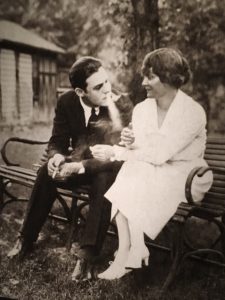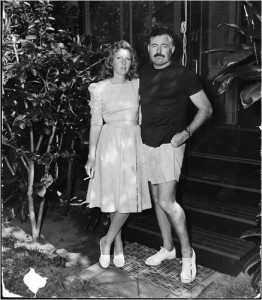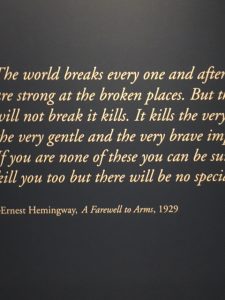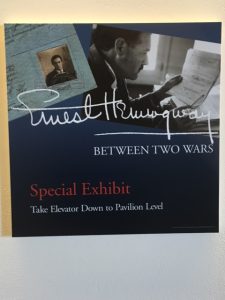Continuation of post regarding my visit to the Kennedy Library, Hemingway Exhibit on Between the Wars

There was an anecdote displayed of an interview that Hemingway had with George Plimpton. Plimpton knew that Hemingway had written the end of A Farewell to Arms something like 39 times. Plimpton, a writer himself, asked if there was a technical problem that stumped him and why he kept re-writing the end. What was the problem? What was the hold-up???
Hemingway, in typical succinct style, replied “getting the words right.”

Finally, a famous quote from A Farewell to Arms (1929) was posted. Most people know the first sentence, but not the next one. It reads, “The world breaks everyone and after many are strong in the broken places.” Most people stop there.

It goes on, however, “But those that will not break, it kills. It kills the very good and the very gentle and the very brave impartially. If you are none of these, you can be sure it will kill you too, but there will be no special hurry.”
Thus we go from something that sounds somewhat upbeat and promising to a rather grim conclusion. Still, above all Hemingway believed that men can’t be defeated even in death.

Finally, his mantra for writing was the following:
- Use short sentences.
- Use short first paragraphs.
- Use vigorous English.
- Avoid the use of adjectives.
- Eliminate every superfluous word.
Love,
Christine

